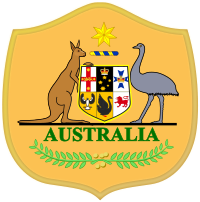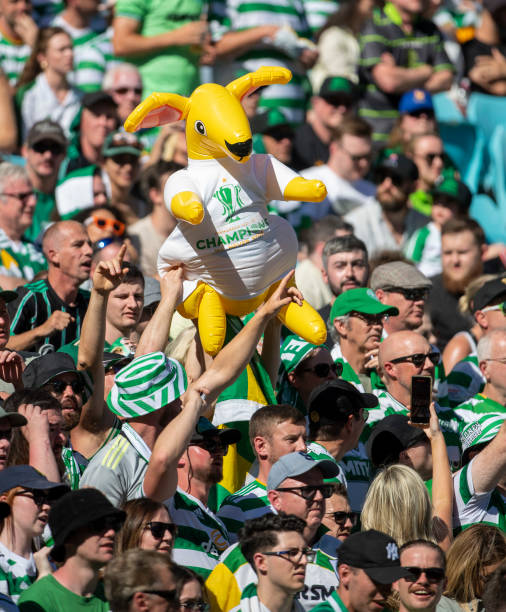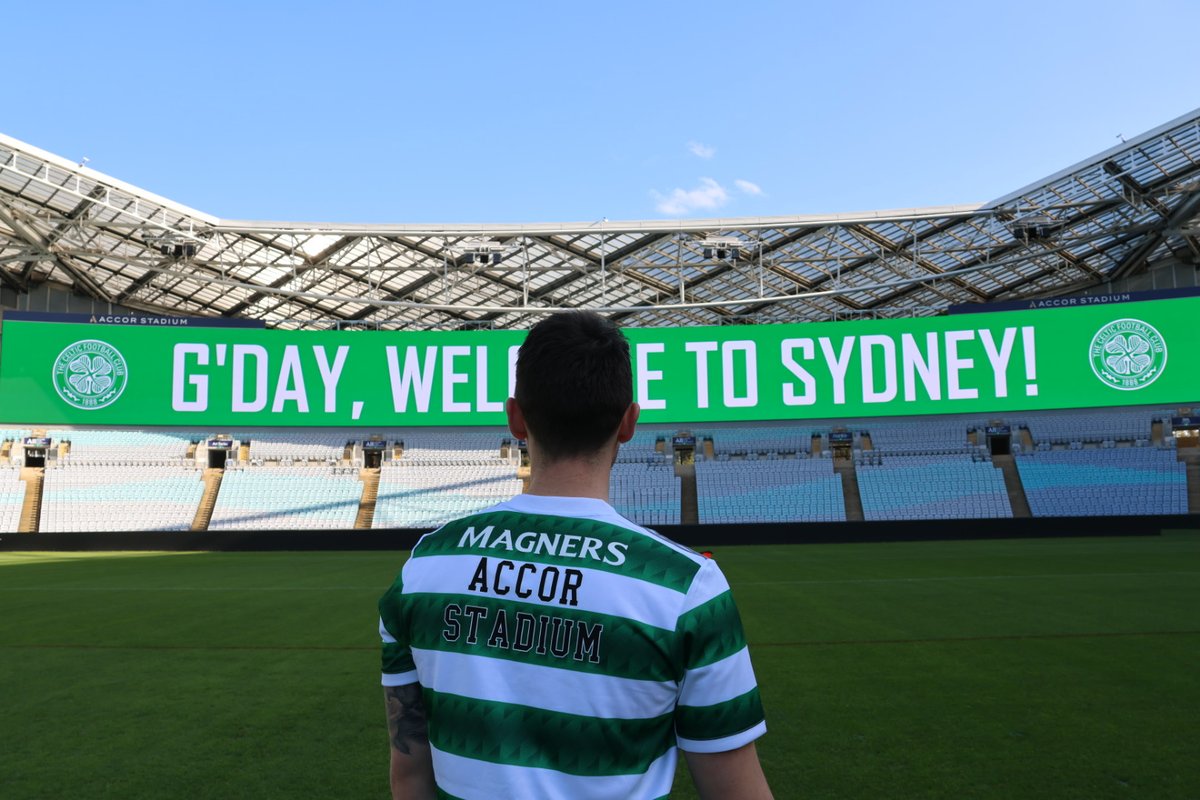Trivia
- First Australian born player at the club was Dan Lavery who played for Celtic in 1948-49.
- In 1977, Celtic took part in a four-team tournament involving Australia (“the Socceroos”), Red Star Belgrade and Arsenal. Celtic won this ‘World of Soccer’ tournament.
- Celtic hosted the legendary Aussie Rugby League pioneers on 3 February 1909, Australia v England. It’s a very important tour in the history of that sport and of Australian sport too. As a newspaper article’s headline put it: “Kangaroos at Parkhead”, see article.
- In World Cup 2018 in Russia, in a 2-1 Australia defeat to France, Celtic player Tom Rogic was subbed off to be replaced by ex-Celt Jackson Irvine.
- We believe Bobby Davidson was the first ex-Celtic player to move to settle in Australia, and he went on to play for Bulimba Rangers Football Club.
- In June 2021, Ange Postecoglu was appointed the Celtic manager; he became the first Australian to take charge of a major side in European football.
- In 2022, Celtic played in the Sydney Super Cup Tournament, playing two matches on this friendly tour.
Summary
The UK is seen historically as the parent to the modern Australia, not to forget the longer greater history of the aboriginal people of the continent. With the British & Irish connections through immigration, the Scots & Irish have long had an important part in building up the economy & country.
In sporting terms, Ireland and the countries that make up the UK have very close ties, and this includes people linked to Celtic too. Many ex-Celtic players have moved there to play & even fully settle down. Bobby Murdoch was considering moving with his wife to Australia before the emergence of Jock Stein as manager. Celtic’s history then would have been so much different.
With Australian football rising, the traffic is no longer one way, and various players have come to Celtic to play for the club, most notably Tom Rogic.
In June 2021, Ange Postecoglu was appointed the Celtic manager. He thus became the first Australian to take charge of a major side in European football. Ange Postecoglu was raised in Australia for most of his life but was born in Greece.
Australian players to have played at Celtic include:
- Dan Lavery
- Scott Macdonald
- Mark Viduka
- Tom Rogic
- Jackson Irvine
- Daniel Arzani
- Aaron Mooy
- Marco Tilio
Many Celts have emigrated & settled there, including:
- Bobby Davidson
- Frank Haffey
- Jimmy Hay
- Duncan MacKay
- Paul McStay
- Willie Wallace
Others have spent time playing there, including:
- Dixie Deans
- Liam Miller
- Davie Provan
Celtic have even toured there, much to the delight of the burgeoning supporters groups down under who go a long way to supporting the club despite being away so far.
A great long tradition that will continue.
Articles
Celtic’s Australian connections
By Roy Hay · July 8, 2011
(son of ex-Celtic player James Hay)
Article from http://sesasport.com/?p=1326
(A version of this article appeared in Goal Weekly on Monday 11 July 2011 and on its website at www.goalweekly.com.au)
Tommy Burns of Celtic shields the ball against Red Star Belgrade during the World of Soccer tournament at Olympic Park, Melbourne. The referee is Jack Taylor, who officiated at the World Cup final in 1974.
Celtic connections
Roy Hay
Celtic on tour
The current tour by Celtic, which involves three matches against the Central Coast Mariners, Perth Glory and Melbourne Victory, is the Scottish club’s third visit to Australia. In 1977 Celtic took part in a four-team tournament involving the Socceroos, Red Star Belgrade and Arsenal. Two years ago they had a one-off match against Brisbane Roar, winning by three goals to nil. Over the years Australia has provided Celtic with a couple of quality strikers in Mark Viduka and Scott McDonald. Former Celtic players who starred in Australia included goalkeeper Frank Haffey, Croatia captain Duncan MacKay and striker John ‘Dixie’ Deans.
The ‘World of Soccer’ tournament took place in July 1977. Promoted by Reg Lambourne, ‘soccer’s Kerry Packer,’ according to Laurie Schwab, the first prize was $36,000. Celtic arrived via Singapore without its captain Kenny Dalglish who was unsettled at Parkhead and would soon be off to Liverpool to replace Kevin Keegan. Red Star Belgrade won the tournament in Singapore beating Celtic by three-one in the final, and the expectation in Soccer Action was that they would repeat the exercise in Australia. On Thursday 20 July, Celtic and Red Star drew one-all before 21,000 at Olympic Park. Paul Wilson was the star for Celtic, which was under the pump for much of the game. Red Star scored through Dusan Savic from a pass by Vladimir Petrovic in 82 minutes, but Roddy McDonald chested home a corner kick for the equaliser five minutes later. Bosko Lukic and Pat Stanton were sent off just before the end.
The Celtic versus Arsenal game on Sunday 24 July 1977 was played at the Sydney Cricket Ground, with the pitch turned east-west instead of north-south ‘for the first time in memory’. ‘People in the Members’ stand who do not pay anything to get into the ground will have the less favourable head-on view of the match.’ The match was attended by the Governor, Roden Cutler, and the Premier of New South Wales, Neville Wran. Expecting 30,000, the match drew 21,460, mainly Celtic supporters, and Celtic beat Arsenal three-two with two goals by Paul Wilson and one by Ronnie Glavin from the spot. Danny McGrain was described by reporter Brian Curran as ‘the best full-back ever to come to Australia’.
On Tuesday 26 July, Celtic had a hard-fought three-two win over the Socceroos, this time at the Sydney Sports Ground. Celtic fielded Peter Latchford, Danny McGrain Tommy Burns, Pat Stanton, Roddy McDonald, Roy Aitken, Paul Wilson, Alfie Conn, Ronnie Glavin, Johannes Edvaldsson and Johnny Doyle. ‘Big Shuggie’ Edvaldsson got two goals and Paul Wilson one. For a midweek match the crowd was a very respectable 12,742 and Celtic manager, Jock Stein, said the Socceroos stretched them. ‘We don’t want another one like that too soon,’ he said. Though he was substituted before the end, Australia’s best player was a Scot, Jimmy Rooney, who had been with the Socceroos in their only World Cup appearance to date in West Germany in 1974. Murray Barnes and Peter Ollerton scored Australia’s goals.
Celtic went on to beat Red Star in the final at Olympic Park on Sunday 31 July, by two goals to nil. Celtic put up the shutters in the first half with Stanton, McDonald, Edvaldsson and Danny McGrain forming an almost impenetrable barrier. Peter Latchford dealt with anything that did get through. Then just before the interval Celtic got a corner and Roddy McDonald kneed Alfie Conn’s inswinger over the line after keeper, Aleksander Stojanovic, raffled it. Two short range efforts by the big central defender but both effective against Red Star. In the second half the game opened up and Celtic clinched it when Roy Aitken sent Paul Wilson away and his cross found ‘Shuggie’ Edvaldsson unmarked at the far post to score easily. Jock Stein got a mention for abusing a television commentator, Jim Barker, who had forecast a Red Star win. That game drew about 22,000 or 23,000, depending on which version of Laurie Schwab’s match report you prefer to read in the Age or Soccer Action.
Danny McGrain with the World of Sport trophy chaired by Ronnie Glavin, Paul Wilson and Peter Latchford
In 2009 Celtic beat Brisbane Roar by three goals to nil with a team which included Artur Boruc, Andreas Hinkel, Gary Caldwell, Glenn Loovens, Lee Naylor, Paddy McCourt, Mark Crosas, Milan Misun, Willo Flood, Shaun Maloney, Chris Killen and Scott McDonald, who was captain for the day. Lukasz Zaluska, Marc-Antoine Fortune, Georgios Samaras, Paul Caddis, Ferry, Koki Mizuno and Aiden McGeady were on the bench. Chris Killen scored twice and Koki Mizuno, with a diving header from a Georgios Samaras cross, rounded out the victory. The Roar had three ex-Rangers, Craig Moore, Charlie Miller and Bob Malcolm, in their squad. There was a cup at stake—the Translink Cup— and Celtic have a stellar record in winning one-off trophies, Singapore notwithstanding. The Cup was part of Brisbane’s Roar against Racism and 31,400 fans watched the game. Celtic manager Tony Mowbray used the match as part of his team’s preparation for the European Champions League qualifiers that year.
From Celtic to Australia
Frank Haffey played 201 games for Celtic and kept 61 clean sheets between 1958 and 1964. He had two caps for Scotland. In 1960 he saved a Bobby Charlton penalty, though it had to be retaken because the big keeper moved too early, as Scotland drew one-all with England. The following year at Wembley he had nine scored past him in a 9-3 rout. After the match Denis Law found him in the team bath singing his head off. Haffey says he would only have lost eight if he had been wearing glasses. Later he came to Australia and played for St George-Budapest, including the 1967 grand final against Apia when there is a famous picture of him balancing on the cross-bar waving to the supporters after the victory. He also played for Hakoah Sydney and coached in New South Wales.
Frank Haffey celebrates with the St George fans in 1967 as only he can.
Duncan MacKay had 236 games for Celtic from 1955 to 1964. A stylish attacking right back, he made his debut for Scotland in 1959 at the age of 21. He came to Australia via Third Lanark in 1965 signed by Frank Burin for Melbourne Croatia as part of the ‘Glamour Team’ which went on to win the State League, the Ampol Cup and the Docherty Cup three years later. He orchestrated a team which also included the talents of Billy Vojtek and Jimmy Mackay. Later he coached Azzurri in Western Australia and returned to Victoria to coach Essendon Lions in 1977.
Duncan MacKay at training.
John Kelly ‘Dixie’ Deans was a nuggety little striker who scored 124 goals in only 184 games for Celtic from 1971 to 1976. A hat trick against Hibernian in the Scottish Cup Final in 1972 confirmed his cult status at Parkhead. In 1977 he came to Australia and joined Adelaide City Juventus. He was the top scorer in the first season of the National Soccer League in 1977 with 16 goals in 26 games. Deans knocked in 30 goals in all in 57 games over three seasons, almost keeping up his incredible goals per game strike rate. He scored four against Mooroolbark in 1977, the whipping boy of the first year of the competition, and hat-tricks against Footscray (1977) and Sydney City (1979). Socceroo and Adelaide City coach Rale Rasic said he was privileged to have been involved with Dixie Deans and Roberto Vieri in their careers in Australia.
Dixie Deans heads for goal for Adelaide City Juventus
David Provan had a very brief but highly productive five-game stint as a guest player at Sydney Olympic in 1985. He scored five goals in those games, all of which were won, from 26 May to 23 June. The nippy and highly talented winger played 302 games for Celtic between 1978 and 1987 scoring 42 goals.
Davie Provan on the ball for Celtic
Willie Wallace, the Lisbon Lion and star striker for Celtic, came out to Australia in 1974 and played with APIA-Leichardt in the New South Wales State League, then coached the club in the NSL from 1980 to 1982 then Wollongong City for a couple of years followed by two at Penrith City also in the NSL
Willie ‘Wispy’ Wallace
From Australia to Celtic
Two great Australian strikers went the other way, from Australia to Celtic. Mark Viduka signed for Celtic in December 1998 after the breakdown of his relationship with Dinamo Zagreb. However, a combination of financial issues over his transfer and the pressures he faced led to a well-publicised flight back to Australia. He returned and in February 1999 he made his debut for Celtic against Dundee United and never looked back. The following season he was the Scottish player of the year and top scorer for the club with 27 goals in 37 league games. He had just begun to build a partnership with Henrik Larsson when the Swedish striker broke his leg. Managerial changes and a defeat to Inverness Caledonian Thistle in the Scottish Cup punctuated a season in which Rangers won the league, so Viduka’s efforts were not enough to salvage the season. The next year he moved on to Leeds United.
Scott McDonald was a Celtic fan from childhood, growing up in Victoria. After a spell in England with Southampton, he moved to Scotland and scored twice against Celtic for Motherwell in the final minutes of the last game of the season in 2005, handing the league title to arch rivals Rangers. Then he signed for Celtic in 2007 and scored at all levels, including a famous Champions league goal against AC Milan. In the league he scored 25 goals in 36 games in his first season, as Celtic clinched its third title in a row. His second year was not quite as productive in terms of goals, though he contributed more to the team. But in 128 games for Celtic he scored 64 times. In 2010 he was transferred to Middlesbrough.
The final Celtic connection for this writer is that my grandfather captained the club for which he played from 1903 until 1911, when he transferred to Newcastle United. You can read about his career in Roy Hay, James ‘Dun’ Hay, 1881-1940: The Story of a Footballer, Sports and Editorial Services Australia, Teesdale, Victoria, 2004, available from our website at www.sesasport.com.au or from Amazon UK.
My thanks to Bill Murray, Pat Woods, John Punshon and the late Laurie Schwab and Eugene MacBride for assistance with this column.
Captions
- Tommy Burns of Celtic shields the ball against Red Star Belgrade during the World of Soccer tournament at Olympic Park, Melbourne. The referee is Jack Taylor, who officiated at the World Cup final in 1974. Source: Les Shorrock collection, Deakin University Library.
- Danny McGrain with the ‘World of Soccer’ trophy, chaired by Ronnie Glavin, Paul Wilson and Peter Latchford. Soccer Action, 3 August 1977, p. 1.
- Duncan MacKay shows classic style at training. Source: Laurie Schwab collection. Deakin University Library.
- Frank Haffey celebrates a Sydney Grand Final win in 1967 as only he can. Source: Soccer World, 1967. It also appears on the back cover of Johnny Warren, Sheilas, Wogs and Poofters, Random House, Sydney, 2002.
- John ‘Dixie’ Deans, former Glasgow Celtic star, heads at goal for Adelaide City. Deans was the top scorer in the first season of the National Soccer League in 1977. Source: Les Shorrock collection, Deakin University Library.
Links
2022





![[Untitled] [Untitled]](https://wikifoundryimages.s3.amazonaws.com/e-DhGiDIHyiHQl-KsEQ0Fg633622)

![[Untitled] [Untitled]](https://wikifoundryimages.s3.amazonaws.com/BhIPSXZyRf6DybHWY8HE7g229530)
![[Untitled] [Untitled]](https://wikifoundryimages.s3.amazonaws.com/LWMwa1JudOgwC3Ca5WSwIg267040)

